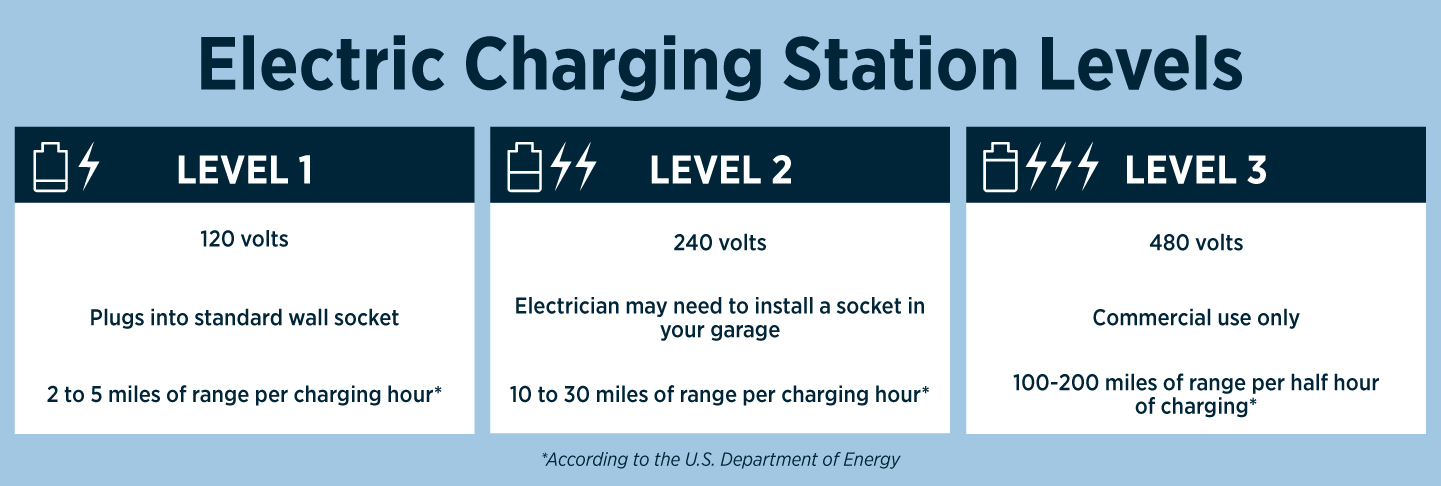
Electric and hybrid vehicles have been capturing the interest of people for years. As gas prices continue to rise, the idea of not having to pay at the pump is even more appealing. Is now the time to go green? Here are four things to keep in mind.
1. Plug-in hybrid and electric vehicle tax credit drives prices down
While the initial sticker price for an electric vehicle or plug-in hybrid is often higher than its gas counterpart, many new plug-in hybrid and electric vehicles, like the Jeep® Wrangler 4xe, Grand Cherokee 4xe and the Chrysler Pacifica Hybrid, may qualify for a federal tax credit up to $7,500. Additionally, there are state and local incentives that could be applicable.
It’s important to do your homework and research incentives before making your purchase to ensure you know exactly what you’ll qualify for and how you’ll be compensated.
2. Electricity isn’t free, but may be cheaper than gas
Instead of paying at the gas pump, you’ll be plugging in your vehicle at home or stopping at a charging station. To get an estimate of how much it will cost to charge an electric vehicle at home, look no further than your current electric bill to see how much you pay for kilowatt-hours (kWh).
As of December 2021, the national average price of electricity was 13.75 cents per kWh and some experts say an electric vehicle can go four miles per kWh. If you drive 1,200 miles per month you will need roughly 300 kWh to charge your car, which would cost you approximately $41.25 a month.
3. Charging stations are becoming more common
Another thing to be mindful of when considering an electric vehicle is what the charging infrastructure is like in your area. There are three levels of charging stations: Level 1, Level 2 and Level 3. Depending on your driving habits and potential charging needs, you may need to consider installing a charging station at your home.
There inevitably will be times when charging at home isn’t an option. Whether you’re on a road trip or simply forgot to plug in and charge, you’ll need to be aware of where there are public charging stations. The Jeep 4xe Charging Network, for example, are Level 2 charging stations at Jeep Badge of Honor off-road trailheads.

4. Maintenance and service expenses are lower
Electric vehicles can save you money on areas besides at the pump. “Maintenance costs may be significantly less for an electric vehicle since there is no oil or belts to change and brakes are used less frequently due to regenerative braking,” says AAA Automotive Technical Engineer Matthew Lum. Basically, you just need to stay on top of rotating your tires and ensuring your windshield wiper fluid is full.
On average, a gas operated vehicle costs $0.101 per mile to maintain compared to $0.061 per mile for an electric vehicle and $0.090 for a plug-in hybrid, according to data published in 2021 by the U.S. Office of Energy Efficiency and Renewable Energy.
Initially electric vehicles can be more costly than gas vehicles to repair. After three months of use, an electric vehicle’s service costs are 132 percent higher than gasoline powered cars, according to predictive analytics and data company WePredict. However, after three years, the average service costs for electric vehicles are 31 percent less than gasoline powered cars. The lower repair costs are attributed to electric vehicles simply having fewer mechanical parts in the first place.